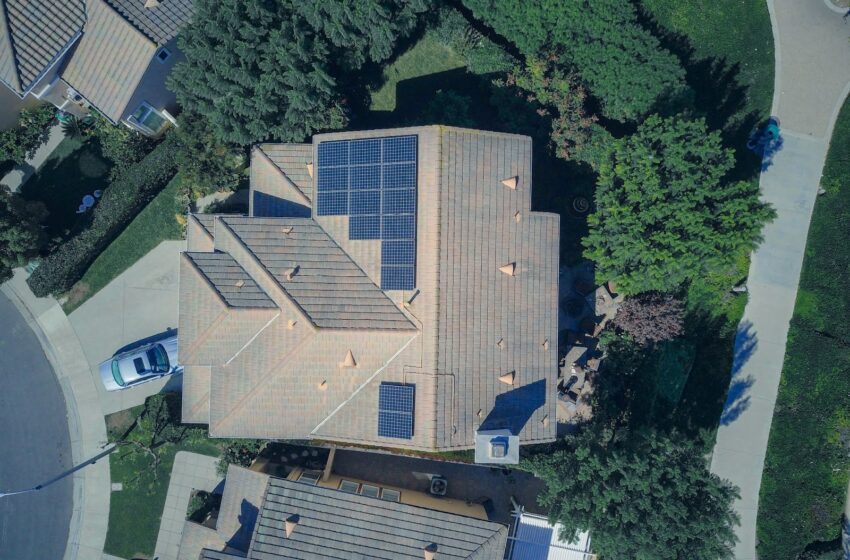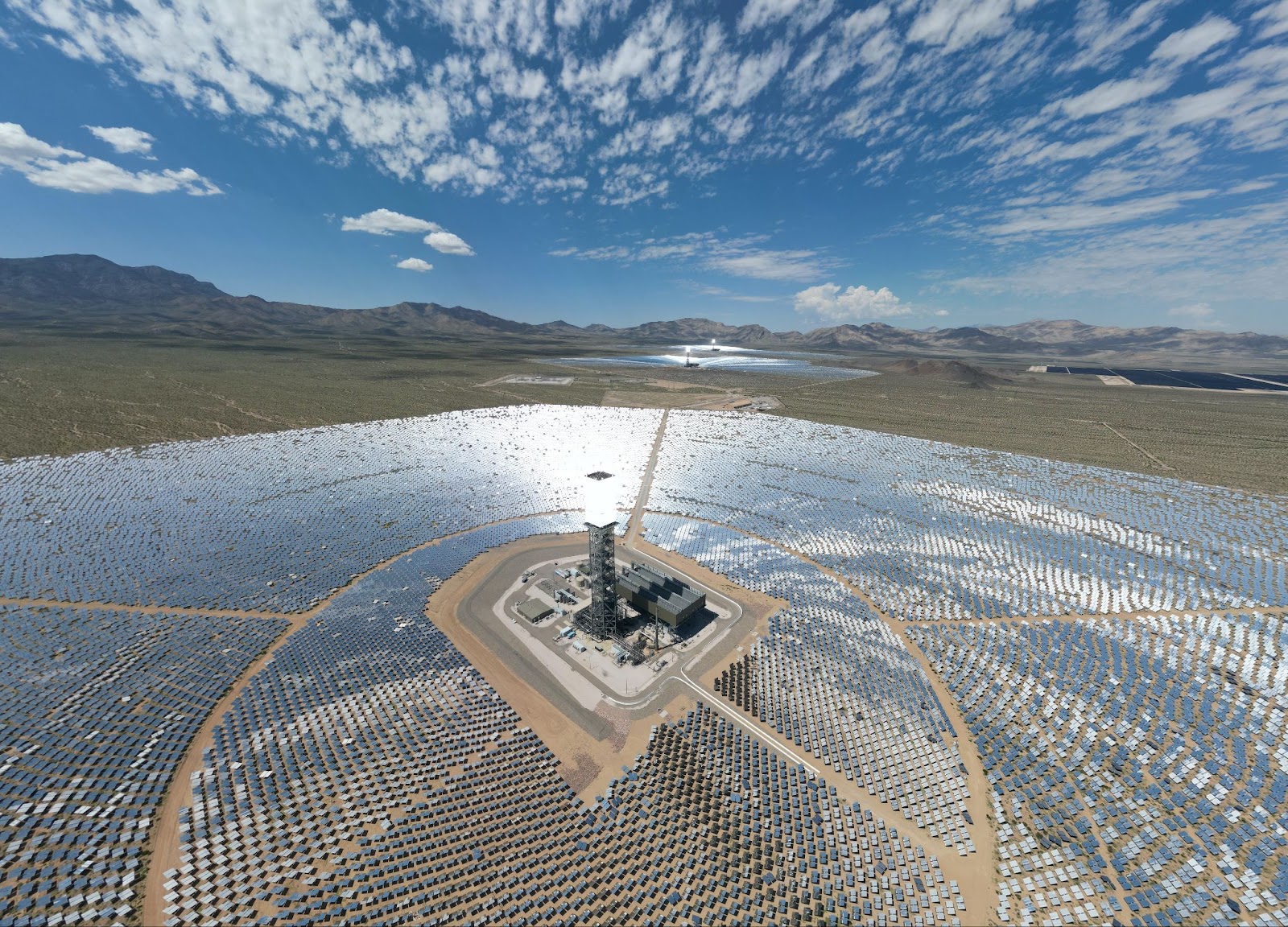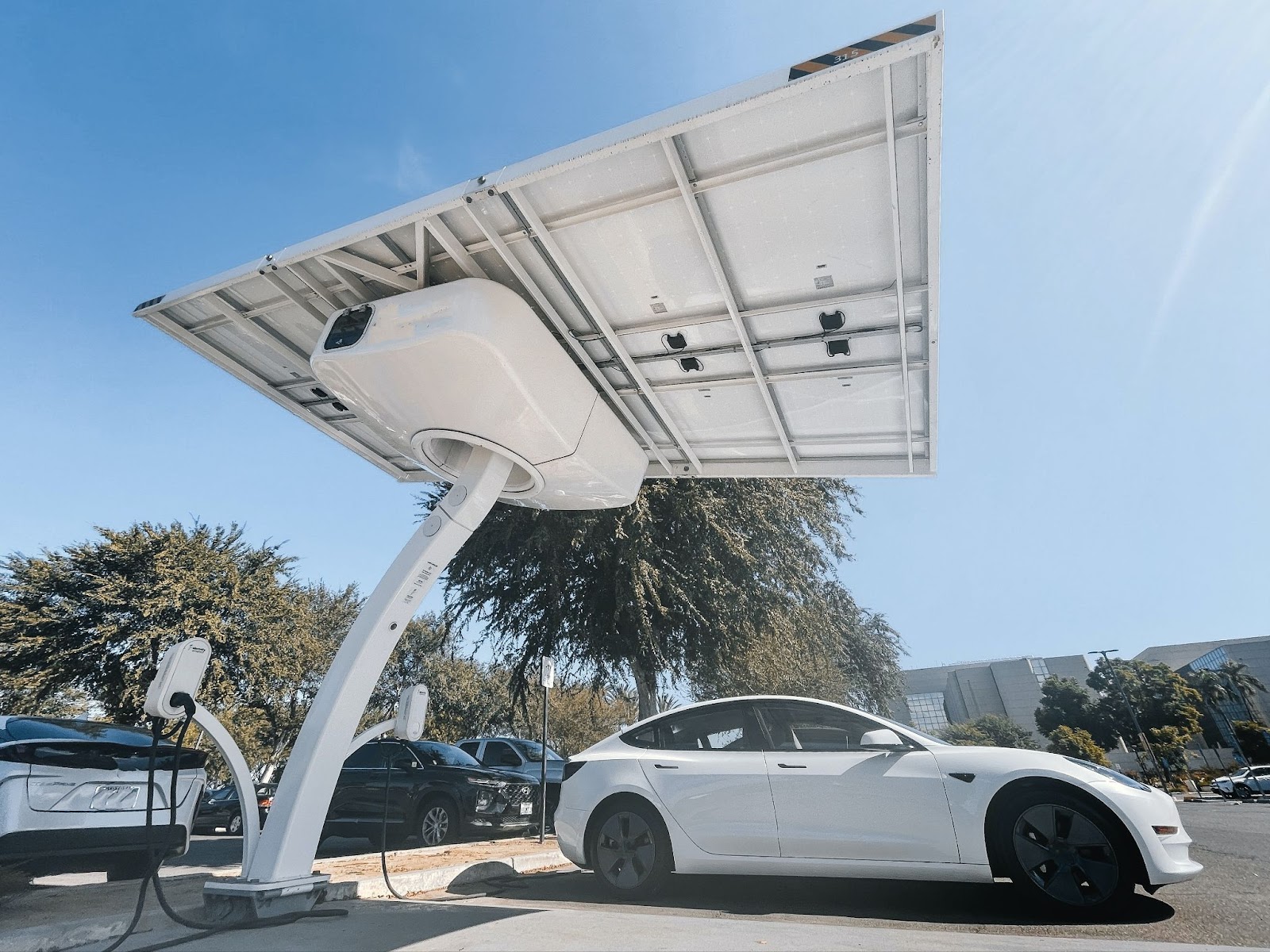
The Cost of Solar in California
How Much Does Solar Cost In California
To determine the average cost of installing solar panels in California, you need to consider the various factors that affect the total cost. By evaluating your home’s electricity consumption prior to installing solar panels, you can determine the right size and capacity needed for your home and cut down the costs effectively. In this section, we will discuss the importance of evaluating your home’s electricity consumption before installing solar panels and the various factors that affect the cost of installation.
Factors That Affect The Cost of Installing Solar Panels
Factors impacting the price of solar panel installation:
Recent innovations in technology and government incentives have made solar panel installations more accessible, however, the cost still remains a concern for many. Several factors can impact the price of solar panel installation such as home location, system size, and more.
The following table shows the factors affecting solar panel installation costs.
Factor | Explanation |
Home Location | Availability of sunlight throughout the year impacts solar panel effectiveness. |
System Size | More significant systems require more materials resulting in higher costs. |
Equipment Quality | High-quality equipment comes at a premium price but offers better long-term benefits. |
Roof Type | Complex roof designs may require additional components, making installation more expensive. |
Labor Cost | Hiring highly skilled professionals for installation raises overall cost. |
In addition to these factors, additional considerations might include project complexity, permits and inspections, and financing options.
For those who are looking to save money on their solar panel installation costs, several suggestions could be considered.
- Selecting smaller systems can lead to lower material costs without compromising on efficiency.
- Opting for lower quality equipment may initially reduce costs but remember that this will likely lead to repairs or replacements in the future that could set you back more than your initial costs.
Overall, it is essential to take into account all factors when considering installing solar panels and work with knowledgeable professionals with experience in designing and installing effective systems. Before installing solar panels, make sure to evaluate your home’s electricity usage or else you might have a brighter living room and a darker bank account.

Importance of Evaluating Your Home’s Electricity Consumption Before Installing Solar Panels
When considering installing solar panels, it is crucial to evaluate your home’s electricity consumption. By assessing your usage patterns, you can accurately determine the size and capacity of the solar panel system required to power your home effectively. This evaluation can also help you save money by identifying areas where you can reduce energy consumption before installation. Therefore, an in-depth analysis of your electricity consumption is critical to ensure optimal benefits from the installation.
In addition to determining the size and capacity of the solar panels required based on electricity consumption, evaluating the home’s geographical area and orientation is also essential. The direction of your roof is crucial in maximizing the efficiency and productivity of the installed solar panel system. Additionally, evaluating shading, roof condition, and potential obstructions that could block sunlight is vital for selecting the most suitable type of solar panel system.
Understanding various factors that impact energy consumption patterns such as household appliances and device usage are unique details not covered earlier. These details are useful in identifying areas where energy savings can be made before installation. Incorporating these strategies into a lifestyle can significantly increase savings on monthly utility costs while increasing productivity from installed panels.
Don’t miss out on significant financial gains by foregoing a comprehensive pre-installation assessment. Ensure expert consultation to receive professional guidance on evaluating your home’s electricity consumption before proceeding with solar panel installation for optimal cost-cutting saving during operation while reducing carbon footprints along with efficient power production and usage over time.
Financing solar panels in California will have you wishing you could generate energy from your credit score.
The Cost of Financing Solar Panels in California
To get the most cost-effective funding for solar panels in California with the aim of cost-saving, explore the pros and cons of leasing versus buying. In addition, delve into California’s solar incentive programs, which can help offset some of the upfront expenses of installing solar panels.
Pros And Cons of Leasing vs. Buying Solar Panels in California
When considering the financial aspect of adopting solar panels in California, one must weigh out the benefits and drawbacks of leasing versus buying. Here are some important factors to consider:
Leasing Solar Panels | Buying Solar Panels |
– Low upfront costs – Maintenance and repair costs are covered by the leasing company – Energy savings may offset monthly lease payments – Easy upgrades when new technology emerges | – High upfront costs – Maintenance and repair costs fall on the owner – Immediate increase in home value – Eligible for tax credits and incentives |
It should be noted that while leasing may have lower upfront costs, the total cost over time could end up being higher due to monthly payments and longer contract terms. Additionally, owning a solar panel system allows for greater flexibility in terms of customization and future upgrades. A common issue for those considering purchasing solar panels is whether or not their initial investment will truly pay off. One California homeowner by the name of Sarah found herself facing this very dilemma. She decided to take the plunge and purchase a system despite her doubts. “At first I was hesitant because it seemed like such a big investment,” she explained. “But now that I’ve had them for a few years, I can’t even imagine going back to traditional energy sources. The savings on my electricity bill have been significant.” California’s solar incentive programs are like free money for the sun-kissed state, but sadly they don’t accept payment in the form of sunshine and good vibes.

California’s Solar Incentive Programs
California’s program for incentivizing the installation of solar panels is diverse and varied, as it comprises a range of different schemes tailored to suit different households’ unique needs.
The table below highlights key details about some of California’s solar incentive programs:
Program Name | Eligibility Criteria | Incentives Available |
Net Energy Metering (NEM) | Residential, commercial and industrial customers with solar panel systems connected to the grid | Credit on electricity bills for excess energy generated |
Solar Investment Tax Credit (ITC) | Anyone who owns a solar panel system | Tax credit equal to 26% of total system cost until December 31, 2022 |
Self-Generation Incentive Program (SGIP) | Residential, commercial and industrial customers with renewable energy storage systems | Incentive based on kilowatt-hour (kWh) capacity added |
Furthermore, Californian homeowners can also apply for Property Assessed Clean Energy (PACE) financing or third-party leasing options.
It’s worth noting that the incentives available vary depending on individual factors such as location, utility provider, and property type.
A recent report by The National Renewable Energy Laboratory states that installing a solar panel system in California can save homeowners an average of $28,000 over 20 years.
Attention California homeowners: Going solar may save you money, but don’t forget to budget for sunscreen and ladder rentals.
The Cost of Maintaining Solar Panels in California
To understand the cost of maintaining solar panels in California, learn the importance of regular maintenance to ensure their longevity, and the role of a reliable solar panel installer in keeping your panels in top condition. Regular maintenance can prevent costly damages, and a trustworthy solar panel installer can help you get the most out of your panels.
Regular Maintenance Required to Ensure Longevity of Your Solar Panels
Solar Panel Maintenance and Longevity: What You Need to Know
One of the key factors in ensuring your solar panels remain efficient for years to come is through regular maintenance. Neglecting this crucial aspect can impact your satisfaction with the system’s overall performance and lifespan.
Here are four essential types of regular maintenance required to ensure the longevity of your solar panels:
- Visual inspections: Regularly inspect your solar panels for damage, debris and accumulated dirt that can reduce efficiency.
- Cleaning: Dust and dirt accumulation on the panels will interfere with the amount of sunshine that it receives, leading to decreased performance.
- Electrical Inspections: Solar panels rely heavily on wiring systems as connections can wear out from exposure. Ensure these electrical parts are tested regularly.
- Inverter inspections: The inverter is a crucial component of any solar-powered system that converts energy into usable electricity. Regular maintenance like checking for fan noise or errors can identify potential issues early enough.
It is important to note that each type of maintenance is equally important in contributing towards increasing the product life cycle of your solar panel system.
Additionally, did you know that apart from periodic maintenance routines, reliable customer support from a trusted provider, especially during unexpected times like weather changes or technical glitches, can also play a significant role in extending longevity?
For instance, one family in California was able to leverage their Solar Panel provider’s excellent customer service when faced with unprecedented hail storms damaging their panel installation earlier this year. Through timely repair services provided by the said team, they saved time, money and continued enjoying uninterrupted clean and safe power for their household needs.
Choose your solar panel installer carefully, or you might end up with a case of solar induced buyer’s remorse.
The Importance of Choosing a Reliable Solar Panel Installer
When it comes to optimizing your solar panel investment, one crucial step is selecting a dependable installer. Choosing a reliable solar panel installer ensures that the panels are installed correctly and efficiently, reducing maintenance costs in the long run. With several options available, doing extensive research on an installer’s reputation and experience is vital.
It’s important to consider factors such as the installer’s certification and the quality of products used for installation. Being diligent about these measures ensures that your installation is up to code, efficient, and cost-effective.
In addition to ensuring upkeep on equipment, establishing a relationship with a reputable solar panel installer can also save you money. Some installers offer regular inspections and maintenance plans, preventing small issues from snowballing into costly repairs or replacements.
A family in Southern California found themselves with a broken solar panel system after hurricanes disrupted their area’s power grid. After contacting their trusted solar panel installer, the team quickly sent out technicians for reassessment and had a new system installed within weeks, without any unexpected costs or delays. Their relationship with their installer allowed for quick action during an unforeseen circumstance.
Going solar in California is like investing in a tanning bed – you may be paying upfront, but the return on investment is golden.

The Return on Investment of Installing Solar Panels in California
To calculate the return on investment of installing solar panels in California, you’re probably wondering about how long it will take to recover the initial cost. Along with that, you may be interested in the cost savings that you can expect from solar panels over time. In this section, we’ll explore these sub-sections and break down the potential financial benefits of investing in solar energy.
How Long Will it Take to Recover the Cost of Installing Solar Panels in California?
Solar Panel Cost Recovery Time in California
California is known to have one of the highest numbers of solar panel installations in the United States. The cost recovery time for these installations keeps decreasing due to various incentives provided by the government and utility companies.
The following table shows different scenarios for solar panel installations in homes and businesses in California, with cost recovery time ranging from 5 years to 20 years based on various factors such as location, installation type, incentives, and electricity costs.
Installation Type | Location | Incentives | Electricity Costs | Cost Recovery Time |
Residential | San Diego | Yes | High | 7 Years |
Commercial | Los Angeles | No | Low | 12 Years |
Residential | San Francisco | Yes | Medium | 8 Years |
Moreover, choosing the right solar panel installer can significantly reduce the cost recovery time. It is crucial to do thorough research before choosing an installer for your solar panel installation.
A couple in Santa Clara decided to invest in a solar panel installation for their home. Despite being skeptical about their decision at first, they were able to recover their costs within seven years of installation. They continue to enjoy reduced energy bills every month while also doing their part for the environment by reducing their carbon footprint.
Going solar may cost a pretty penny upfront, but over time your bank account will be basking in the sunlight.
The Cost Savings You Can Expect From Solar Panels Over Time
Solar Panel Savings: A Professional Approach
The installation of solar panels in California can save you a significant amount of money over time. The renewable energy source is not only environmentally friendly, but it also offers substantial cost savings on your energy bills.
A table with the heading “Long-Term Cost Savings from Solar Panel Installation in California” shows that even though the initial investment may be high, the savings over time are well worth it. The table indicates an estimated 20-year breakdown of costs and savings for an average size solar panel system and assumes a three percent annual increase in electricity rates.
The table includes columns such as:
- Total Installed System Cost
- Available Tax Credits
- Estimated Net Cost After Incentives
- Estimated Annual Electricity Savings
- Estimated Years to Payback Initial Investment
- Lifetime Electricity Savings (20 Years)
It is evident that an upfront investment could mean a lifetime of savings.
Moreover, Hesitations Still Exist When it Comes to Solar Panels
Despite the long-term cost savings and environmental benefits gained from installing solar panels, some reservations still exist among people regarding their effectiveness. However, researchers have shown that with new advancements in technology and affordable financing options available to homeowners, investing in solar panels has become more accessible than ever before.
Interestingly, A Brief History of Solar Panels
Solar panels’ history dates back to 1839 when French physicist Alexandre Edmond Becquerel discovered the photovoltaic effect while experimenting with electric current using electrolytic cells. Today, modern photovoltaic cells and robust solar arrays have allowed consumers to harness solar power effectively. With advancements like these, it’s no surprise that more and more people are choosing to invest in them for long-term cost savings as they generate clean renewable energy.
Even if you’re not a fan of sunshine, installing solar panels in California is a bright idea for your wallet.
